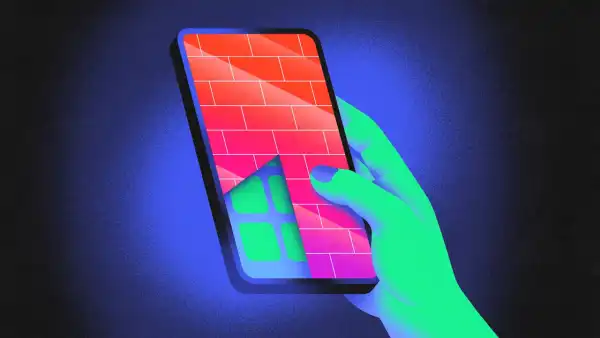
Save this storySave this storySave this storyYou’re reading Infinite Scroll , a weekly column by Kyle Chayka about how technology shapes culture.
The other day, on a weekday, I sent an Instagram message to a friend of mine, a New York-based art consultant named Stephen Truax, to discuss an exhibition. Instead of responding on the app, he told me he’d blocked Instagram on his phone during work hours. Fascinated, I asked him how he’d done it. Truax told me he uses Opal, an app that makes your phone feel a little more like a regular phone without requiring a complete device swap. He said several of his friends had raved about it, so he started using it, too. Opal isn’t a new app (its latest version came out in 2022), but I took those reviews as validation beyond the hype. I downloaded the app with some skepticism, thinking my phone addiction was incurable.
Spending too much time online is an integral part of my job, and a necessity for writing this column. But I recognize that there is such a thing as diminishing returns: a doctor, for example, doesn’t need to chain-smoke to know that cigarettes are bad for you. When I started using Opal a few weeks ago, the stream of online stimulation was even noisier than usual. It wasn’t just social media updates; it was video podcasts, live-stream commentators, and celebrities trying to get attention amid the digital chaos. The temptation to take it all in was too great. I could leave my phone in another room, switch to a flip phone, or try launcher apps like Dumb Phone, which transforms the screen of my smartphone into a minimalist set of typing buttons. But all of these decisions depend on self-discipline, which I’ve discovered I lack. I’ve found that Opal offers something of a gentle parenting approach to smartphone habits: You create a daily schedule of which apps to block, and then the app helps you stick to it with a mix of gentle resistance, encouragement, and guilt. Following the app’s recommendations, I set a recurring “Work Time” block from 9 a.m. to 5 p.m. and selected all the social apps I use: Bluesky, Instagram, TikTok, X, even Threads. At the designated time in the morning, these apps are grayed out on the home screen and remain that way all day.
I was surprised to find that this new routine was relatively painless, in part because of the app’s convenience. Whenever I get frustrated about not being able to access Instagram on my phone, I just think, “Sure, as an adult, I can wait a few more hours to see photos of my friends’ dogs—5 p.m. isn’t that far away.” Crucially, Opal also lets users temporarily pause their blocking for short periods of time without feeling like a failure; after the set break time, the blocking automatically resumes. (I’d say I only used the breaks for business purposes, but that would be a lie.) Kenneth Schlenker, the company’s French-American founder and CEO, told me that it’s important to cultivate a sense of agency in users. “If you create too much of a commitment, you risk people abandoning it,” Schlenker said. The inspiration for Opal came to Schlenker while he was working at Google, circa 2008. There, he watched as software began to be designed to “hack your attention,” in his words, with new interfaces and notification systems optimized to engage users. Over the next decade, he watched as app addiction spread from techies to everyone else, including his relatives, both young and old. He founded Opal in 2020 to add what he called “productive friction” to online users. “The entire tech industry is about eliminating friction, and we’re doing the opposite,” he said. (The app’s name comes from the idea that our attention is valuable; users who hit their screen-time goals are rewarded with glittering digital gems.)
The added complexity makes addictive apps harder to access. When certain platforms are blocked in Opal, they’re also unavailable in web browsers; exiting a scheduled block requires entering passcodes and waiting a built-in delay during which the app prompts you to perform breathing exercises. The writer Molly Young has recommended isolating your phone in a plastic case with a timer lock for increased productivity; the app is far more convenient. What appeals to me about Opal is how it uses technology against technology: while TikTok and Spotify optimize their interfaces for maximum content consumption, Opal uses crowdsourced real-time data and A/B testing to maximize the length of time these apps are blocked. It may seem absurd—the idea that the only way to defeat the dark arts of user experience design is to use more dark arts—but for Schlenker, it’s just a matter of best practices. “I think most people overestimate their agency and underestimate the power of addictive products,” he said. In other words, we need some help resisting the onslaught of designers trying to get us to scroll through our news feeds again.
Sourse: newyorker.com